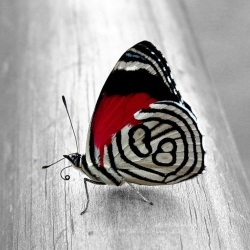
The scientists found that a walking stick insect that is not well camouflaged is more likely to be eaten by birds, and in turn, those birds are then also more likely to feast on the spiders, caterpillars, plant hoppers, ants and other arthropods living on the same plant.
The resulting overall reduction in bugs living on the plant also means that the plant itself was less likely to be attacked by sap-feeding insects.
“Our study shows that the evolution of poor camouflage in one species can affect all the other species living there and affect the plant as well,” said Tim Farkas, lead author of the study published in the journal Current Biology. “It’s intuitive, but also really surprising.”
Farkas led the study as an ecology and evolutionary biology doctoral student in Assistant Professor Patrik Nosil’s lab at CU-Boulder. Nosil and CU-Boulder doctoral student Aaron Comeault are also study co-authors. All three have since moved to the University of Sheffield in England.
Evolution is often thought of as a process that unfolds slowly over centuries if not millennia, as individuals with genetic advantages have a greater chance of surviving to pass down their genes to the next generation.
But scientists are increasingly identifying instances when evolution works on a much shorter time scale. An oft-cited example of rapid evolution is the peppered moth. The light-colored moths were historically able to camouflage themselves against lichen-covered tree bark in England. A darker variant of the moth existed but was more rare, since birds were able to easily spot the dark moth against the light trees. But during the industrial revolution, when soot blackened the trees, natural selection favored a darker variation of the moth, which began to flourish while the light-colored variant became less common.
